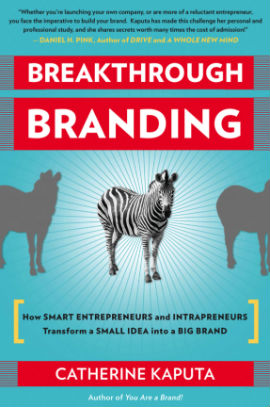
Job number one as an entrepreneur is landing the first 10 or so core employees. You need to have a clear idea of the kind of talent you want to attract, because this core group sets up your employee brand and your startup's DNA. As a startup, you're unproven. You need to have a clear sense of the different types of people you need in the company and how to unify them under a common culture with its own customs, beliefs, and procedures. You also need to be a leader who's easy to follow, with a clear mission and a strong sense of the results you want to achieve. Your employee brand is the kind of people who represent your company's values, work style, and personality.
Thinking in terms of employer brand and employee brand can be a powerful strategy for creating a culture that champions its people and helps them flourish. Having a strong internal brand can help grow your business, because you're more likely to attract the best talent and everyone will feel challenged.
Creating A Growth Culture
You're not trying to run a social club. Your goal is to win in the market. But to do that you need to create a special culture.
Make sure that you hire people who have skills, resources, and knowledge that you don't have. Even the most well-rounded entrepreneur isn't good at everything. You've got to figure out your shortcomings and fill the gaps with team members who have those aptitudes. Otherwise, it is unlikely that you'll be around after the start-up phase. Make sure that you have people who can help you land business and bring in revenue--critical tasks in the start-up phase.
You need to create a workplace with the right amount of challenge and expectations, the right amount of freedom and control. You want everyone to be a growth agent empowered to do her job and help grow the business.
Studies show that the worst work environments are those in which people have little say over their day and always have to follow someone else's orders. They feel like a cog in a slow-moving corporate machine and consequently don't do as well as those who work in companies where people have more freedom to decide how to handle projects and assignments. According to these studies, money isn't the key driver for most people. It's working in an environment where people have the ability to grow and develop their potential.
Radical Creativity
How do you create a dynamic, innovative culture where it's everyone's job to come up with ideas and grow the business?
First, create a culture where it's OK to fail. The most innovative people are the ones with the most ideas. Most of them are bad ideas that fail. Some companies are even rewarding risk-taking that fails with employee-recognition bonuses and trophies, or setting aside time in the week for new idea generation.
Second, set up the offices and common areas so that there is lots of mingling in the workplace. Contrary to the image most people have of the solitary inventor or entrepreneur, it turns out that most breakout ideas don't come from loners. Innovative ideas aren't solitary things. Most successful ideas come from people interacting with each other in environments where ideas are discussed and shared.
That's why there is a long history of simultaneous inventions. Transformational ideas like the electric battery, the telephone, and the radio were all made by several people who came up with the same idea at practically the same time. Most of them didn't even know each other, but they were plugged into what was happening in their industry and influenced by similar ideas, what some researchers call the hive mind. That's the kind of culture you want to create for your business, with all your people, not just the senior people, reaching for innovative ideas.
You want to create a company where people are dying to work because it's not just work--it's fun and things are happening. To win the war on talent, many Silicon Valley companies offer elevated perks like free gourmet lunches and on-site haircuts and dry cleaning. You can take your pet to work at some companies; game-maker Zynga will even pay for pet insurance. (The company is named after the CEO's dog, after all.)
Resist the Copycat Syndrome
Groupthink is when everyone in a group starts thinking alike, and it's alive and well in the business world. Most entrepreneurs generally resist group-think and the copycat syndrome, but they can creep in as your company expands. People in the same company share so many of the same influences and belong to so many of the same clubs and organizations that they can even start to dress alike.
Don't try to copy the competition's culture no matter how successful they are. You want to stay on top of what your competitors are doing to be competitive, but you need to create your own company customs and ways of staying in the lead. The best way to be a leadership brand is to harness the creativity and business thinking of every member of your diverse organization. That can only happen when you encourage and reward out-of-the-box thinking and new ideas for making the business more competitive.
The business world is dynamic, so you have to be strong with your external customers and with your internal  customers--your employees. Don't leave an opening for a new entrepreneur to gallop on the scene with something new and steal away your best talent. You want your company to be the one everyone is clamoring to join. To do that, you need to:
customers--your employees. Don't leave an opening for a new entrepreneur to gallop on the scene with something new and steal away your best talent. You want your company to be the one everyone is clamoring to join. To do that, you need to:
· Make everyone a corporate entrepreneur who is a growth agent for the company.
· Encourage innovation and ideas at every level, especially the frontlines.
· Create a culture with customs and rituals that are special to your company.
· Make sure all employees know their objectives and key results
· Be easy to follow as a leader.
Excerpted from Breakthrough Branding by Catherine Kaputa, © 2012 Nicholas Brealey Publishing. Follow Catherine @CatherineKaputa and visit her at SelfBrand.
[Image: Flickr user dvidshub]